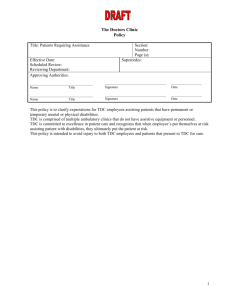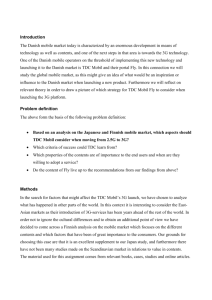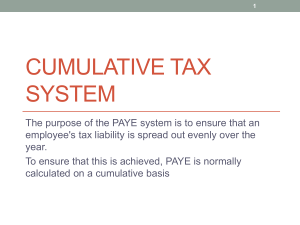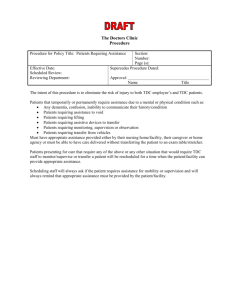Document 10452376
advertisement
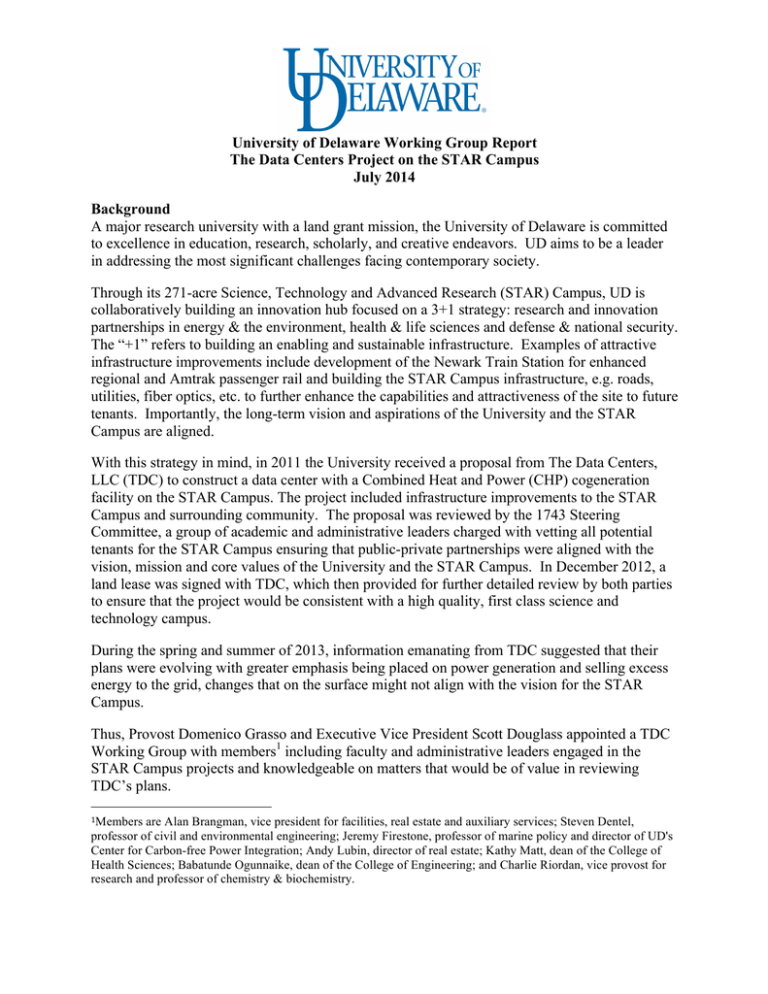
University of Delaware Working Group Report The Data Centers Project on the STAR Campus July 2014 Background A major research university with a land grant mission, the University of Delaware is committed to excellence in education, research, scholarly, and creative endeavors. UD aims to be a leader in addressing the most significant challenges facing contemporary society. Through its 271-acre Science, Technology and Advanced Research (STAR) Campus, UD is collaboratively building an innovation hub focused on a 3+1 strategy: research and innovation partnerships in energy & the environment, health & life sciences and defense & national security. The “+1” refers to building an enabling and sustainable infrastructure. Examples of attractive infrastructure improvements include development of the Newark Train Station for enhanced regional and Amtrak passenger rail and building the STAR Campus infrastructure, e.g. roads, utilities, fiber optics, etc. to further enhance the capabilities and attractiveness of the site to future tenants. Importantly, the long-term vision and aspirations of the University and the STAR Campus are aligned. With this strategy in mind, in 2011 the University received a proposal from The Data Centers, LLC (TDC) to construct a data center with a Combined Heat and Power (CHP) cogeneration facility on the STAR Campus. The project included infrastructure improvements to the STAR Campus and surrounding community. The proposal was reviewed by the 1743 Steering Committee, a group of academic and administrative leaders charged with vetting all potential tenants for the STAR Campus ensuring that public-private partnerships were aligned with the vision, mission and core values of the University and the STAR Campus. In December 2012, a land lease was signed with TDC, which then provided for further detailed review by both parties to ensure that the project would be consistent with a high quality, first class science and technology campus. During the spring and summer of 2013, information emanating from TDC suggested that their plans were evolving with greater emphasis being placed on power generation and selling excess energy to the grid, changes that on the surface might not align with the vision for the STAR Campus. Thus, Provost Domenico Grasso and Executive Vice President Scott Douglass appointed a TDC Working Group with members1 including faculty and administrative leaders engaged in the STAR Campus projects and knowledgeable on matters that would be of value in reviewing TDC’s plans. 1Members are Alan Brangman, vice president for facilities, real estate and auxiliary services; Steven Dentel, professor of civil and environmental engineering; Jeremy Firestone, professor of marine policy and director of UD's Center for Carbon-free Power Integration; Andy Lubin, director of real estate; Kathy Matt, dean of the College of Health Sciences; Babatunde Ogunnaike, dean of the College of Engineering; and Charlie Riordan, vice provost for research and professor of chemistry & biochemistry. UD Working Group Report on TDC Project – July 2014 Goals The Working Group was charged with evaluating the TDC project’s impact on the STAR Campus and surrounding community. Specifically, the group sought to collect data that would permit for an evaluative and quantitative assessment of the environmental impacts as well as a determination of appropriate sizing of the cogeneration facility, aka the power plant. To achieve these goals, the Working Group engaged ENVIRON International Corporation, a global consulting firm with expertise in assessing environmental and human health impacts with a “unique ability to bring clarity to issues at the intersection of science, business and policy.”2 ENVIRON was engaged to investigate such issues as air emissions including greenhouse gases and their impact on human health, noise, visual effects, water use and storage, transportation, public safety and environmental justice. To evaluate whether the proposed power plant is appropriately sized, ENVIRON recommended HDR, Inc., an architectural, engineering and consulting firm with specific expertise in power delivery, generation and renewable energy. HDR’s analysis included assessment of TDC’s basis for defining the size and redundancy of the proposed power plant as well as assessing the capacity of the system to meet TDC’s reliability requirements. Both consulting firms are leaders in their fields and have conducted similar analyses for a variety of clients. Methodology The Working Group considered and/or reviewed a variety of documents to insure that all issues within its scope of its work were properly addressed. Among these were the technical reports developed by ENVIRON and HDR; UD’s Path to Prominence Strategic Plan; the American College & University Presidents’ Climate Commitment; UD’s Climate Action Plan; TDC’s Air Permitting Application; and the 2011 Science and Technology Campus Master Plan. Additional design and planning documents were requested of TDC to allow for a thorough evaluation of the environmental impacts of the project on the STAR Campus and local community. TDC provided the assurance that all documents they had developed were available to the Working Group. ENVIRON also relied on information from telephone interviews and email communication with TDC personnel and representatives, publically available Geographic Information System (GIS) data, and Federal, State, County and local regulations and ordinances. The Working Group and ENVIRON principals reviewed and discussed the environmental assessment report commissioned by the City of Newark and prepared by Liberty Environmental, Inc. In addition, the Working Group reviewed numerous documents and reports submitted by campus and community members. Key Findings The Working Group’s review of information, and weighing of technical, economic, environmental, and mission-related issues, led to the following key observations. 1. A data center per se could be advantageous to the STAR campus, with the potential to provide research and internship opportunities, enhance the property infrastructure so as to attract other tenants; provide construction and permanent jobs and provide tax revenue for local schools and community. 2Overview of ENVIRON from its website- http://www.environcorp.com/about/overview.aspx 2 UD Working Group Report on TDC Project – July 2014 2. Relative to other fossil-fuel energy sources CHP is an efficient and viable transitional energy generation technology. However, its efficiency is predicated on being appropriately sized such that the recovered heat can be used or sold throughout the year as useful energy. Specifically with TDC’s plan, it is not clear that this will be the case, particularly in the non-summer months. 3. Contemporary high quality data centers utilize the existing grid or deploy a combination of the existing grid and renewable energy generation to meet their power needs. This predominant approach appears to be advantageous on many grounds: reliability, economic and environmental. 4. The proposed 279 MW cogeneration facility is significantly (by at least two times) larger than any other on-site power generation facility known to us at data centers in the United States. Its scale, coupled with its unorthodox island mode power generation plans, makes it difficult to predict whether the claimed environmental and commercial goals can be met. This uncertainty has been apparent in TDC’s numerous changes in even the broadest aspects of their plan, such as carbon recovery and power redundancy. The important implication for the University is that the proposed advantages of the TDC installation at its completion cannot be considered reliable. 5. Numerous requests were made to TDC regarding various physical, technical, and environmental aspects of the proposed facility. In most respects, the information provided was scant. TDC stated that its plans continue to be in the conceptual rather than design stage and subject to change. Unfortunately, this meant that detailed evaluation of most environmental impacts (e.g., noise, wastewater, storm water, natural gas pipeline expansions, etc., and most human health impacts) was not possible. 6. Because TDC has filed for an air emissions permit with the Delaware Department of Resources and Environmental Control (DNREC), air emissions was the sole area where a meaningful technical evaluation was possible. Review of the documents provided for TDC air permitting revealed (i) a lack of rigor in preparation. Compared with other recent permit applications reviewed by our consulting firm, the TDC application lacked details and commonly accepted analyses, and it had important inconsistencies; (ii) air permit emissions limits that are LESS stringent than other limits ENVIRON has seen in recent power plant applications; (iii) significant generation of greenhouse gases with no present intent to capture and sequester and the emission of other pollutants, e.g., nitrogen oxides (NOx) and sulfur dioxide (SO2), would have demonstrative and negative effects on UD’s commitments to sustainability and reducing its carbon footprint; and (iv) PM2.5 production3 will be more significant than stated given the volume of PM2.5 precursors that will emanate from the power plant. If the air permit application can be assumed to exemplify overall quality of the facility plans, and its eventual operation, there is doubt as to whether this will be a first class installation consistent with the University’s vision for the campus. 3PM2.5 refers to particulate matter of dimensions less than 2.5 microns. Chronic exposure to these emissions has been linked to increased mortality. 3 UD Working Group Report on TDC Project – July 2014 7. The “island mode”, i.e., off-grid design of the CHP, appears problematic. Switching between island mode and on-grid is non-trivial, and the necessary technologies to achieve this mode of operation should be demonstrated to ensure that TDC’s plans are viable. 8. The plans and TDC business model appear to be largely centered on on-site grid power generation at a significant scale to a captured customer class, i.e., data center customers, so as to achieve economies of scale and to generate revenue by selling excess power to the grid. The useful life of the power plant (~30 years) is significantly greater than the useful life of the data center (~10 years). Thus, the power plant is not subordinate to the data center. Given the University’s commitment to reduced carbon emissions, and its strong reputation in renewable and carbon-free energy research, the emplacement of a fossil-fuel based facility of this size does not appear consistent with UD’s vision of a first class science and technology campus or its Path to Prominence. Recommendation In summary, the proposed facility is not consistent with high quality development and a first class science and technology campus. The Working Group concludes that plans to support such a facility should not be approved on the STAR campus. 4
